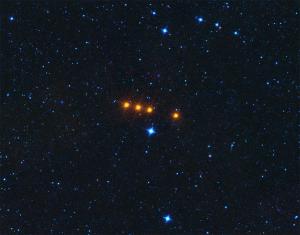Blog
The Big Asteroid
We Know Little About
6 August 2015
 NASA/JPL-Caltech
NASA/JPL-CaltechEuphrosyne is the 5th most massive asteroid in the solar system. It has the highest density of any asteroid, so it’s only the 12th largest in terms of diameter. Despite its size, however, we actually don’t know that much about Euphrosyne.
One of the reasons for this is the fact that Euphrosyne is quite dark. It’s about the color of asphalt, which makes it difficult to observe in visible light. But like many objects, the asteroid is much brighter in the infrared. That’s because objects give off heat that can be seen in the infrared. That’s what makes the NEOWISE spacecraft so useful. It scans the sky at infrared wavelengths, so it’s able to see dark objects like Euphrosyne.
From the NEOWISE data a team was able to locate and track about 1,400 smaller asteroids that follow a similar orbit to Euphrosyne.1 From their orbits and characteristics, these are part of the same asteroid family, and likely originated from a large impact with Euphrosyne. Because of the asteroid’s unique orbit (being rather inclined relative to other asteroids) it is easier to trace the orbits of these asteroids back to the original collision.
Studying a family of asteroids such as this is important, because gravitational interactions with planets can cause the orbits of some of the smaller asteroids to shift so that they cross the orbit of Earth. Such “near Earth objects” or NEOs could pose an impact threat to our planet. By studying Euphrosyne and its family, we can get a better understanding of the orbital dynamics that can make an asteroid a potential threat.
There’s still a great deal to learn about Euphrosyne, but with infrared observations we’re making progress.
Masiero, Joseph R., et al. “The Euphrosyne family’s contribution to the low albedo near-Earth asteroids.” The Astrophysical Journal 809.2 (2015): 179. ↩︎